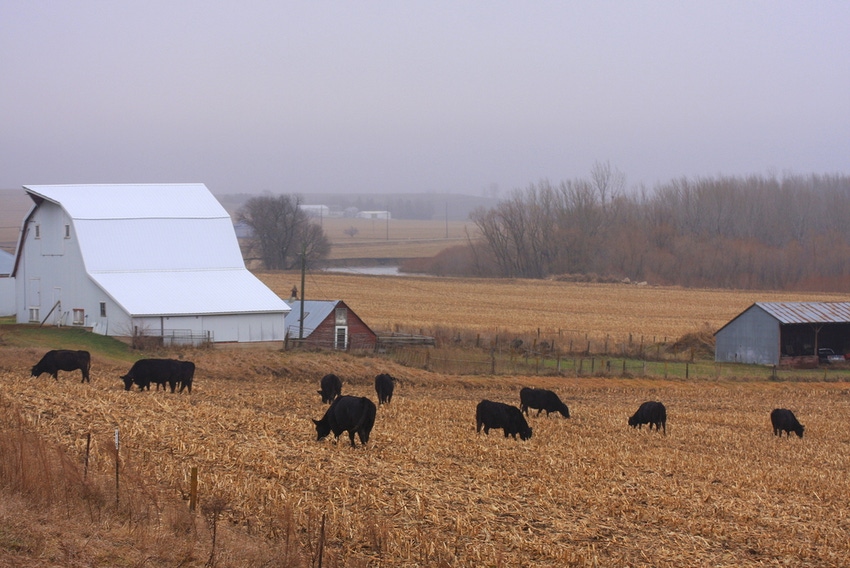Grazing cornstalks can fill forage gaps during drought
Producers must commit to moving cattle to new pastures to successfully use cornstalks.
August 17, 2023

Grazing cornstalks or drought-stricken corn can fill feed gaps during drought, says University of Missouri Extension beef nutritionist Eric Bailey.
There are some nutritional concerns, and producers must commit to moving cattle to new pastures to successfully use cornstalks as feedstuff, but there are benefits.
Cows are selective grazers. They choose the highest protein and most easily digested plant parts first. In corn hierarchy, stalks rank last, but they still fill cow bellies when options are limited. Because cornstalks are fibrous and poorly digested, consumption becomes a problem.
“A beef cow is not going to eat 35 pounds of cornstalks a day,” Bailey says. “There is simply not enough room in their gut to hold it all. This exacerbates the calorie deficit. Expect a cow to eat at most 1.5% of their body weight per day of these forages.�”
By eating the higher-protein parts of the corn first, cows may need few extra supplements. Energy is not limiting during the first 30 days of grazing. Protein will be limiting after 30 days on the same field at 0.5 pound of crude protein per cow per day. Consider herd needs, as the needs of lactating and fall-calving cows or stocker calves may be greater, says Bailey.
Also, stalk energy is limiting. “Forage resources like this are a step below even poor fescue hay,” he says. The percentage of total digestible nutrients will be in the mid-40s. Beef cows need a diet that has 50%-60% TDN, so producers need to make up the difference with supplement.
Crude protein is also likely limiting in straw-based diets, says Bailey. Producers need to make sure cows get at least half a pound of crude protein from supplement to offset the deficiencies in crude protein from straw.
Bailey uses a simple rule of thumb for estimates: bushels per acre divided by 3.5 equals grazing days per acre for a 1,200-pound cow. For example, if the field produced 150 bushels per acre, then an acre would provide enough residue for 42 grazing days (150 divided by 3.5).
For a more accurate estimate, factor in residue produced per bushel of grain. There will be 16 pounds of leaf and husk residue per bushel of grain. In a 150-bushel-per-acre crop, there will be 2,400 pounds of dry feed per acre. Assume one acre per cow per month and try to leave cows on the field less than two months, Bailey says. This estimate is more conservative but will keep cows from eating the lowest-quality plant parts (stalks and cobs).
Assume 50% harvest efficiency since trampling and weathering will cause some dry matter loss, Bailey says.
One concern in grazing corn is the increased chance of nitrate poisoning during drought. Bailey says it is always wise to test for nitrates before grazing.
You May Also Like


.png?width=300&auto=webp&quality=80&disable=upscale)
